- When the Ka’apor people felt the Brazilian government wasn’t doing enough to protect their lands against illegal logging, they took matters into their own hands.
- Through a partnership with Greenpeace, the Ka’apor are deploying camera traps and tracking devices to track and document illegal logging.
- Studies have shown that indigenous control of territory provides the strongest deterrent to forest degradation and destruction.
Members of an indigenous group in the Brazilian Amazon are battling illegal logging on their territory. Now the Ka’apor people are adding new tools to their arsenal of arrows, clubs and antiquated firearms: camera traps, computers and GPS tracking devices.
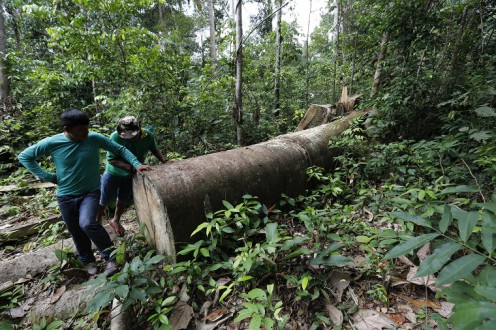
Forest dwellers
The Ka’apor, an indigenous group of about 2,000 people, live in the Alto Turiaçu Indigenous Land (ATIL), a vast 530,000-hectare (1,310,000 acre) tract in northern Brazil’s Maranhão state. Their territory covers an area roughly twice the size of Rhode Island and was legally established in 1982.
Now, in the face of illegal logging, corruption and government inaction, the Ka’apor people are taking action to preserve their lands. As a Ka’apor leader said in a Greenpeace Brazil press release, “We are taking action because the forest is our home. It’s in the forest that lies our life. Without the forest, we are not the Ka’apor.”
The Ka’apor affinity for the forests where they live is closely entwined with their identity as a people: The word “ka’apor” itself means “forest dwellers.”
Deforestation and indigenous rights
Strengthening indigenous peoples’ control over their ancestral lands, such as the ATIL, affords one of the best opportunities to slow deforestation and mitigate climate change, according to a recent report from the World Resources Institute (WRI). In areas with high deforestation pressure, ensuring indigenous communities have legal rights to their lands is one of the most effective ways to prevent deforestation, perhaps because indigenous people have a greater incentive to safeguard their lands than understaffed and underfunded government agencies. Indigenous and local communities control more than 500 million hectares (1.2 billion acres) of forests worldwide. Those areas together contain about 37.7 billion tons of carbon – roughly equivalent to the carbon held in all North American forests. In Maranhão state alone, ATIL comprises roughly half the state’s remaining Amazon forest.
But despite Brazil’s legal recognition of indigenous rights and the lower rate of deforestation on indigenous territories, ATIL and the Ka’apor people are at risk.
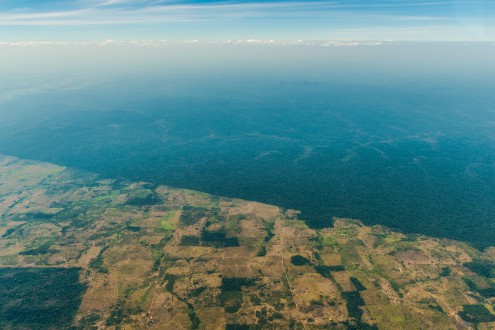
Some 84 percent of the Amazon forests that were degraded between 2007 and 2013 are situated within indigenous territories, according to a Greenpeace analysis of DEGRAD (INPE) data. During that period, more than 5,700 ha (14,085 acres) of forest within the ATIL were subjected to illegal logging by outside actors.
The degradation of Ka’apor lands and the ensuing conflict between the indigenous community and illegal logging operations has boiled over into violence and death, a stark reality that is increasingly commonplace in Brazil.
According to a Global Witness, report, “Deadly Environment,” more than half of the worldwide deaths attributed to conflict over environment and land issues between 2002 and 2013 occurred in Brazil. In 2014 alone, 70 indigenous people were murdered in the country – more than a 30-percent increase over the previous year. And the Ka’apor have not been spared: In the past four years, four Ka’apor were killed and an additional 15 attacked, according to the Missionary Indigenous Council (CIMI).
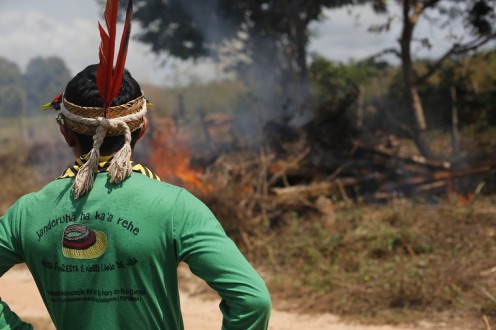
Taking action
Frustrated by the government’s response to the illegal logging, the Ka’apor took matters into their own hands in 2013, by expelling loggers, destroying their equipment, and establishing a permanent presence in loggers’ seized outposts. Unsurprisingly, the loggers have responded with threats and often-fatal retaliation – illegal logging can be quite lucrative. Some timber coveted in the US and the EU, such as Ipê, can cost as much as $1,470 per cubic meter.
Now, at the Ka’apor’s request, Greenpeace is equipping the community with about $5,000 worth of camera traps, GPS trackers and computers in a bid to give the community the upper hand against illegal loggers. These devices were created to monitor wildlife, but they are increasingly being deployed to detect intruders into reserves and large, remote land holdings as trade in wood and wildlife becomes more lucrative.
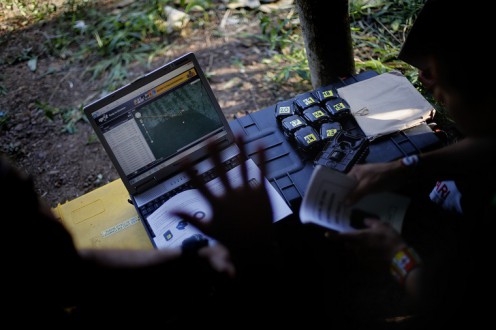
Photo credit: Lunae Parracho / Greenpeace
The camera traps function day and night and are activated by motion- and temperature-sensitive triggers. The Ka’apor and Greenpeace installed eleven cameras at strategic locations around their lands, where the cameras will collect evidence of illegal logging by capturing pictures or short videos. This actionable evidence needs to be retrieved from the individual units. But such models are less expensive, and because the Ka’apor regularly patrol their territory, recovering the images should not be a hardship.
“With the cameras, we hope to prove that at a certain time and date in a certain place, the trucks arrived empty and left with timber. We hope the devices can produce more evidence to persuade the authorities to do something to stop the logging and the conflict and the murder,” Marina Lacorte, a forest campaigner with Greenpeace Brazil, told The Guardian.
The GPS tags, which will be placed covertly on unauthorized vehicles within the Ka’apor’s lands, are programmed to transmit a signal indicating geographical position, date and the speed at which the unit is moving, information that can then be accessed via Google Maps. “This map, as well as the information sent by the tracker, it is the finger printer to prove the crime,” a Greenpeace Brazil representative wrote in an email. Sending a signal every ten minutes, the system should have enough power to remain fully operational for two weeks. And because the trucks drive only on open roads and in clearings, the system should be able to successfully transmit a signal.
An uncertain future
Although Greenpeace has used covert tracking devices on logging trucks in the past, the efficacy of the technology in this particular context remains to be seen. The Ka’apor are accustomed to some commercial technologies, such as cell phones and computers, but the tracking equipment and camera traps are new to them, according to the Greenpeace representative. “We will have to wait some time to see the possible performance and benefits,” and the outcome will depend on how seriously the Ka’apor adopt the tools and how the issue of illegal logging on their lands continues to unfold.
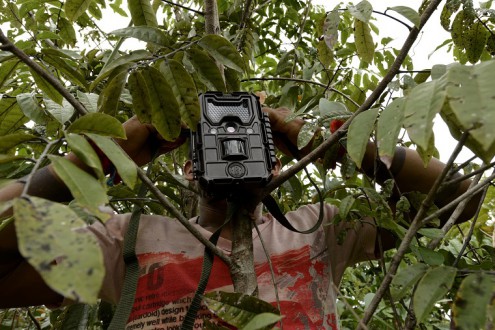
Beyond human uncertainties, working with electronics in the Amazon presents its own obstacles: “the main challengers we always face are climate, dust, water and vegetation when working under canopies,” the representative wrote.
In their struggles against illegal logging operations, the Ka’apor people have demonstrated tenacious bravery and a stalwart dedication to their forests and their way of life. Adding surveillance and tracking technology to their arsenal of tools could help the Ka’apor document illegal activities and spur the government to action. And by keeping their forests intact, the Ka’apor are doing the rest of the world a favor, too, by preserving some of the most carbon-dense forests in Amazonia.
Do you have experience with camera traps and GPS tags? How could your experience apply to reducing illegal resource harvest? Tell us about it in the Mongabay forum.
Citations:
Lewis, S. L., Edwards, D. P., & Galbraith, D. (2015). Increasing human dominance of tropical forests. Science, 349(6250), 827-832.
Nolte, C., Agrawal, A., Silvius, K. M., & Soares-Filho, B. S. (2013). Governance regime and location influence avoided deforestation success of protected areas in the Brazilian Amazon. Proceedings of the National Academy of Sciences, 110(13), 4956-4961.